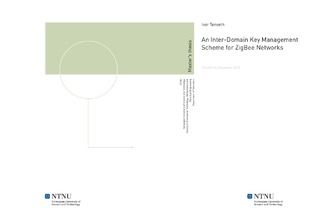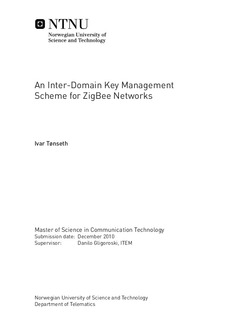| dc.description.abstract | Wireless networks are increasingly penetrating new range of applications, from industry controllers, to houshold appliances. The wireless standard, IEEE 802.15.4/ZigBee, combines simple operation with low power consumption. This type of network is increasingly utilized as a mechanism to monitor, survey, sense and track. This thesis presents a multi-domain device registration and authentication model built on key pre-distribution mechanisms in order to enable nodes from different operational managements to interact. Little research has been done in the area of inter-domain communication in sensor networks. Even so, this may be an important feature to sensor networks which can open up for new services.Two novel suggestions for a multi-domain model are presented; hierarchical inter-domain random pool (HIDRP), and interactive inter-domain random pool (IIDRP). The HIDRP scheme relies on a single global key-pool containing all keys which will be used by sub-domains, thereby acting as the equivalent of a root CA. The IIDRP scheme on the other hand, is based on the assumption of domains containing keys derived separatly without correlation. Devices from foreign domains will accordingly have no common key-material to which key-establishment can successfully be acomplished. Sharing common keying material happens by the exchange of keys between the coordinator nodes in each domain. The nodes will then be able to derive a shared secret key to enable authentication. Since there are no protocols for inter-domain communication in the ZigBee protocol, the first step will be to provide architectural changes that will enable this function. Furthermore, a procedure to share network keys or link-keys for devices in different domains will have to be designed. In the HIDRP scheme, the numerical analysis was performed to evaluate the key connectivity in relation to the size of keys involved in the distribution. The analysis showed that as the global key pool size increased, the link connectivity decreased. Furthermore, no correlation was shown between key connectivity and the size of the local key pool. Only the size of the global key pool and the key ring affected the link connectivity. In the IIDRP scheme, numerical simulation was performed in order to measure the round-trip-time (RTT) for link-key aquisition in a foreign domain. The results showd that as the number of hops increased between the node and the sink, so did the RTT. | nb_NO |

